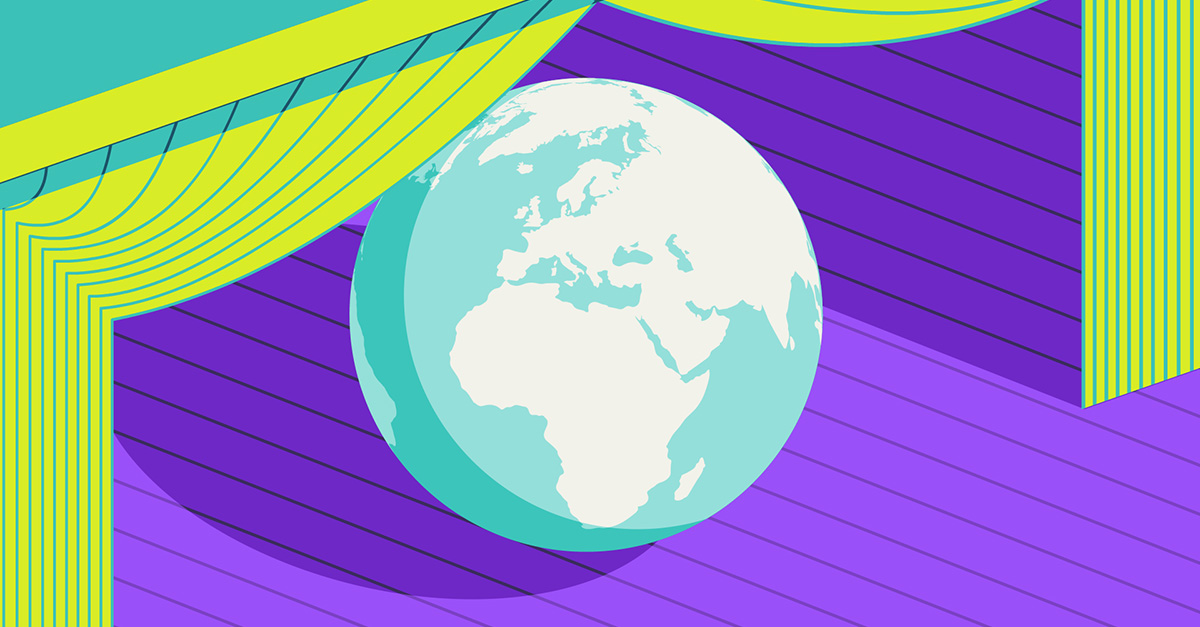Reach through the digital iron curtain
Organizations must bridge the “digital iron curtain” of technology standards, to climb out of the unprecedented economic devastation caused by Covid-19.


The alarming 9.8% fall in OECD GDP in the second quarter of 2020 shows that the world is at a crossroads in terms of economic development.
There is clear and urgent work to be done by all of us if we are to emerge sustainably from this fallout.
First, businesses and governments must make serious investments in technology to build resilience into their organizations. As we have all seen – in business and in our personal lives – the connective power of technology has cushioned the social, economic and aspirational impact of this pandemic. It brings us together; it keeps commerce moving.
At the same time, we must all learn to navigate the divide between the technology standards of the East and the West. Technology can solve many problems, but the fact that standards appear to be growing less compatible poses a risk of stopping us in our tracks.
A “digital iron curtain” is descending. At a time when we should be focusing on working better together, this curtain risks being a barrier to cooperation. Where do we turn? My hope is that digital companies can rely on technology to help reach through the curtain – something that will be crucial for steering international business out of the current economic decline.
East-West divide
The divide between East and West grows. China’s Belt and Road Initiative, building a new Silk Road throughout Asia, the Middle East and Africa, is knitting together regions which will provide the future growth of the world’s economy. It is creating a separate ecosystem where the likes of Alibaba, Tencent, WeChat and TikTok are thriving and becoming the world’s largest tech companies.
Countries like Kazakhstan, Uzbekistan, Kenya, Sri Lanka, Vietnam and Indonesia are all borrowing Chinese money to fund infrastructure projects – built by Chinese companies – and to trade with Chinese businesses. This anchors them to Chinese technology and ways of working. In fact, many of the countries involved have pledged to cooperate with China in areas of communication via advanced technologies such as 5G networks.
Some of these are already embroiled in Western conflict. Huawei is the obvious one, with the West slowing down or stopping plans to deploy its 5G technology. This has had a huge impact on the telecommunications equipment used in both Europe and China. European telecom companies still have some tricky decisions in front of them, as do their governments.
Risk to trade
TikTok (and its parent company ByteDance) is another example. It has already scrapped plans to build a London HQ because of current reluctance towards the use of Chinese tech. TikTok has also been forced to consider a sale to create a Western version of the app that is acceptable to US authorities.
A recent report by the Henry Jackson Society found that the UK relies on China for more than 50% of its supply of certain goods, including laptops, mobile phones, several drug compounds and goods with industrial applications, such as safety glass and steel-capped boots.
The banking industry is increasingly reliant on tech, and the sector could suffer from a further East-West divide. HSBC has historic ties to both China and the UK, although Asia constitutes the bulk of its earnings. Does that mean it will have to move away from UK customers because its technology will have to adapt to Chinese standards? It sounds inconceivable, but the questions will be asked.
Reunifying two tech worlds
There are practical ways to paper over the divide, such as listing on stock exchanges in both East and West. This is what Alibaba did, recognizing the need to keep a foot on each side of the digital iron curtain, with a dual listing in Hong Kong and New York.
That does not address the underlying problem of standards. Organizations must be able to trade with each other across regional divides, more so than ever. Otherwise, how can we hope to build resilience into our businesses if our pool of partners grows smaller by the year? This isn’t at risk of happening – it is already happening.
As members of the global technology community, digital companies like ours must find ways to help organizations overcome this problem. As policymakers work to engage both sides of the geopolitical debate, it is incumbent on us – as technologists – to make differing standards speak together again, as one.
Smart, focused investments in a thin and independent integration layer between systems on both sides of the curtain can keep businesses moving forward. If we can help organizations find digital ways to overcome competing standards, complex migrations, multi-cloud and hybrid environments, then the tech industry will be able to say it was part of the world’s post-Covid solution: Not part of the problem.